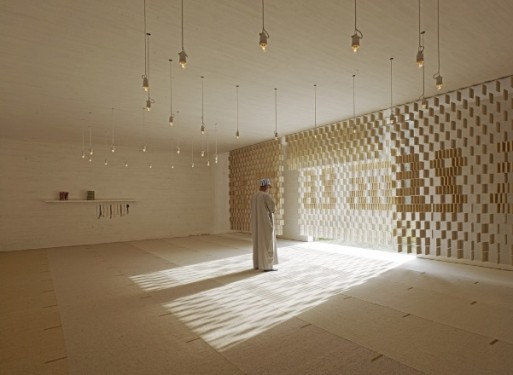Though Islam may not be one of the most predominant religions in Austria, the presence of the Muslim community holds a special cultural presence in the country. In 2012, a striking Islamischer Friedhof (Islamic cemetery) came to life through the innovative designs of Bernardo Bader Architects. The cemetery stands today in the western state of Voralberg where it serves its community as a place of solace in the wake of death and loss.
 As of 2010, Islam was recorded to be the largest minority religion in Austria. With a growing population of around 500,000 people, the Islamic community is thriving in a country with a richly diverse history of faiths. Currently, 77.9% of Austrians are Catholic. However, the land of Bosna and Edelweiss is one of the only Western European countries to provide Muslims with the officially recognized status of their religious community—thanks to the long-time law of Anerkennungsgesetz (Act of Recognition).
As of 2010, Islam was recorded to be the largest minority religion in Austria. With a growing population of around 500,000 people, the Islamic community is thriving in a country with a richly diverse history of faiths. Currently, 77.9% of Austrians are Catholic. However, the land of Bosna and Edelweiss is one of the only Western European countries to provide Muslims with the officially recognized status of their religious community—thanks to the long-time law of Anerkennungsgesetz (Act of Recognition).
Islamic aesthetics are renown for their roots in geometric design. The BBC says the prevalence of geometric forms demonstrate a sense of interdependency and inevitability important to their faith, while making “an appeal to transcend time and space.” People do not appear in Islamic art, but you could argue that because “[the] Muslim artist does not attempt to replicate nature as it is, but to convey what it represents,” he strikes a very true chord with our humanity. “Geometry,” says the BBC, “is thought to reflect the language of the universe and help the believer to reflect on life and the greatness of creation [in Islam].”
“[the] Muslim artist does not attempt to replicate nature as it is, but to convey what it represents” that he strikes a very true chord with our humanity. “Geometry,” says the BBC, “is thought to reflect the language of the universe and help the believer to reflect on life and the greatness of creation [in Islam].”
In constructing the Islamischer Friedhof, Bernardo Bader wanted to respect these elements of the Islamic religion through a design that took traditional Islamic motifs and used them as a launching pad for a completely modern look. Nested in the Alps, the Voralberg cemetery blends into its landscape through a neutral color palette and open design. With walls outlined by roseate concrete, architects say their inspiration came from “the primordial garden.”
The cemetery is made up of “five staggered, rectangular grave-site enclosures, and a structure housing assembly and prayer rooms,” says the architectural journal Building Design, “The principal materials used were exposed reinforced concrete for the walls and oak wood for the ornamentation of the entrance facade and the interior of the prayer space.” To enter the cemetery, visitors have to pass through one of the its most dramatic rooms: the congregation space.
Outside light hits the floors of the congregation space, dappling itself through the geometric latticework that has been so integral to Islam. This, the visitor realizes, is a place where tradition stands but keeps an eye on the future – and being defined by such an ostensible paradox links the cemetery with the very nature of grieving and death. When we grieve, it’s important to remember our past. It’s important that we hold onto the memories of our loved one, and that often involves an engagement with tradition. However, every process should move us forward and include the stages of grief. The Islamischer Friedhof becomes optimistic in that respect, defining itself with a design that is inextricably bound to the past, present and future.
More SevenPonds articles you may enjoy:
- Oslo, Norway: The Cemetery Skyscraper
- “Family Tree” Design Integrates SMS Technology with Urns
Designboom winners Loucas Papntoniou and Asta Sadauskaite digitilize death with their new take on the family tree - The Reversible Destiny Foundation: Architecture as an Extension of Life After Death

 Friedhof for All: Austria’s Modern Islamic Cemetery
Friedhof for All: Austria’s Modern Islamic Cemetery





 The Other Death in the Family
The Other Death in the Family

 The Healing Sound of Singing Bowls
The Healing Sound of Singing Bowls














